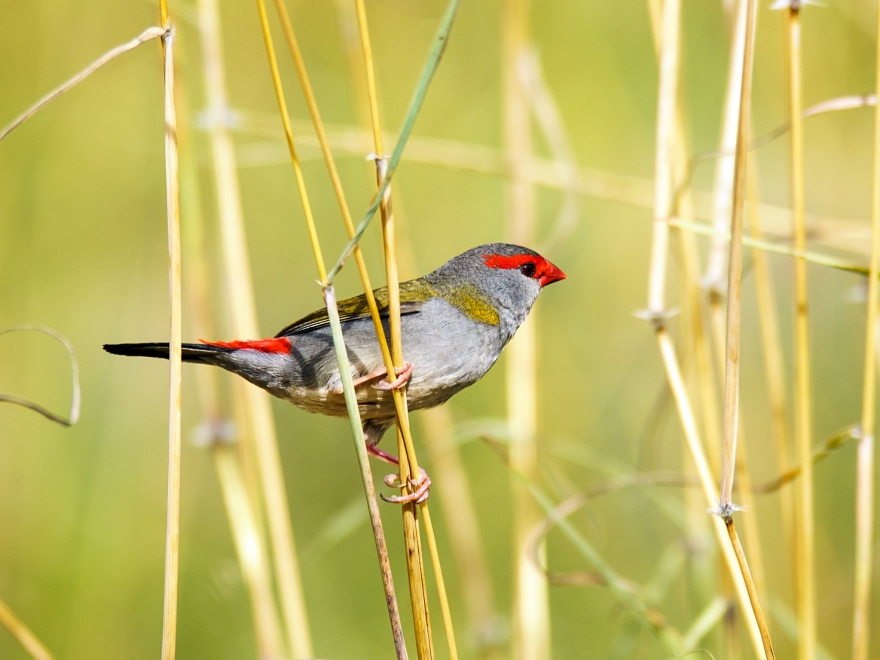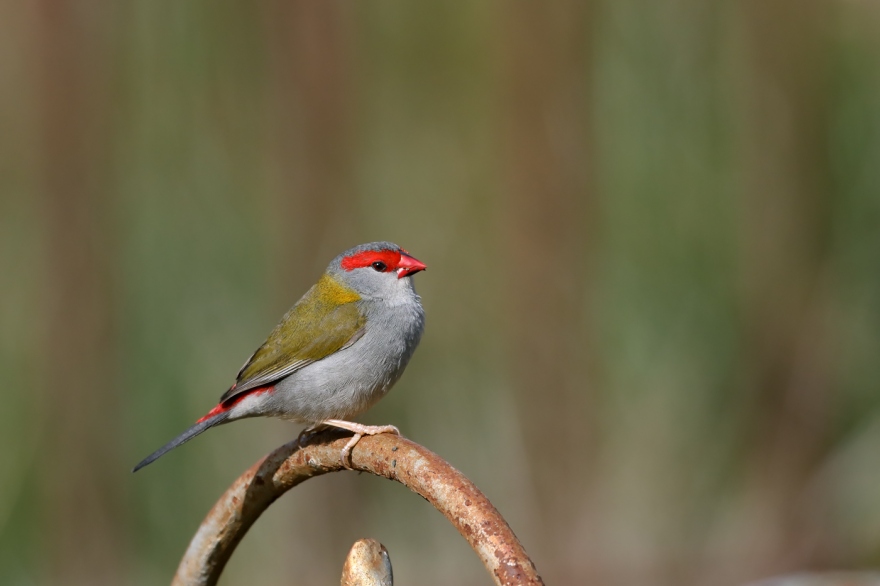The red-browed finch is an Australian grassfinch found in South Australia and the eastern mainland states. The populations in northern Queensland are a subspecies colloquially knows as the “lesser” red-browed finch. The species is reasonably well established in Australian aviculture, except for the lesser red-browed which is much rarer and significantly more expensive.

Housing & Compatibility
Red-browed finches can be housed successfully as single pairs, a colony, or as part of a mixed collection. Best results are achieved in a large planted aviary.
Red-browed finches and lesser red-browed finches will hybridize easily, and should not be housed together.
Red-browed finches are generally very placid in a mixed aviary situation. They can be successfully housed with most placid finches, quail, doves, and (space permitting) Neophema parrots.
During the breeding season, they will defend the area around their nest. The aviary should be sufficiently large that other birds can avoid their territory.
Diet & Feeding
A quality finch seed mix including canary seed and various millets forms the basis of the red-browed finch’s diet. Seed lacks many essential vitamins and minerals which must be compensated for by introducing other foods. Sprouting seed increases its nutritional value and is a cheap way to improve your bird’s health. Freshly grown green seed heads should also be offered frequently.
Some leafy greens should be provided throughout the year. Kale, bok choy, endive and silverbeet are the most nutritious and will be readily eaten. Spinach can also be given, but only sparingly as it can contribute to calcium deficiency.
Live food is an important component of the red-browed finch’s diet and should be provided throughout the year – especially during the breeding season. Mealworms, maggots, termites, and small crickets will be consumed readily. Commercial soft finch food mixes can also be provided for an added nutrient boost, particularly when breeding.
Do not feed anything from the list of forbidden foods.

Breeding
Red-browed finches breed best in spring and autumn, with a hen bird that is at least 12 months of age.
They prefer to nest in a shrub or dense dry brush, however a budgie-sized nest box will be acceptable if a natural nesting location cannot be provided. Red-browed finches will not tolerate nest inspections.
They typically lay 4-6 eggs in each clutch, which are incubated by both parents for approximately 14 days. Young birds fledge the nest at three weeks of age and are usually independent about three weeks later. Aggression between parents and their mature offspring is rare.
Sexing
Red-browed finches are sexually monomorphic, meaning males and females look virtually identical. DNA sexing is the only reliable to accurately determine the gender of an individual bird.
Males usually have subtly more intense red colouration on their heads. An experienced keeper may be able to visually sex birds
Mutations
Several mutations have been established. The most common sees orange replace the red of the face mask and tail feathers. Yellow, fawn, and pied mutations are also seen on occasion.
Health
A strict worming and parasite control regime is essential to ensure the long-term health of any finch collection. Red-browed finches are a short-lived species with a lifespan of about 6 years.
Red-browed finches will spend a lot of time foraging for insects on the aviary floor, making them more susceptible to parasites and diseases that spread via droppings. Regular cleaning and preventative healthcare is a must.